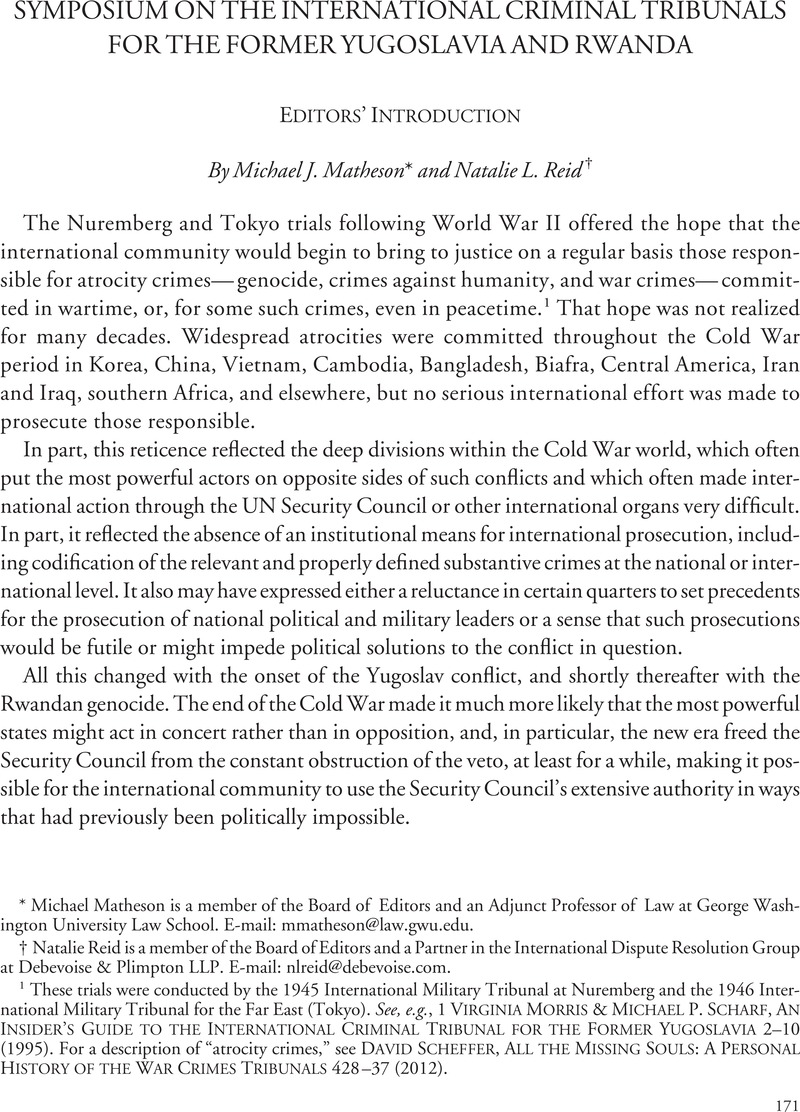Published online by Cambridge University Press: 20 January 2017

1 These trials were conducted by the 1945 International Military Tribunal at Nuremberg and the 1946 International Military Tribunal for the Far East (Tokyo). See, e.g., 1 Virginia Morris & Michael P. Scharf, An Insider’s Guide to the International Criminal Tribunal for the Former Yugoslavia 2–10 (1995). For a description of “atrocity crimes,” see David Scheffer, All the Missing Souls: A Personal History of the War Crimes Tribunals 428–37 (2012).
2 SC Res. 827 (May 25, 1993).
3 SC Res. 955 (Nov. 8, 1994).
4 United Nations Mechanism for International Criminal Tribunals, About the MICT (undated), at http://www.unmict.org/en/about.
Target article
Editors’ Introduction
Related commentaries (10)
Demystifying Political Violence: Some Bequests of ICTY and ICTR
Divided We Stand? The AD HOC Tribunals and the CEE Region
Feminist Legacies
Gender Justice Beyond the Tribunals: From Criminal Accountability to Transformative Justice
Globalizing Justice, Homogenizing Sexual Violence: The Legacy of the ICTY and ICTR in terms of Sexual Violence
How Politics Shapes the Contributions of Justice: Lessons from the ICTY and the ICTR
International Criminal Law as a Spotlight and Black Holes as Constituents of Legacy
Leaving Legacies Open-Ended: An Invitation for an Inclusive Debate on International Criminal Justice
On a Self-Deconstructing Symposium
The Legacy of the ICTY and ICTR in China